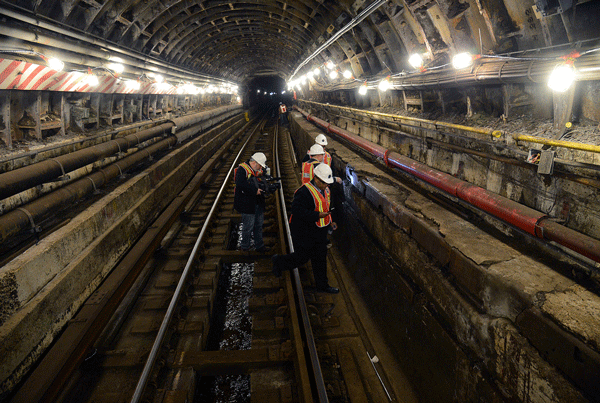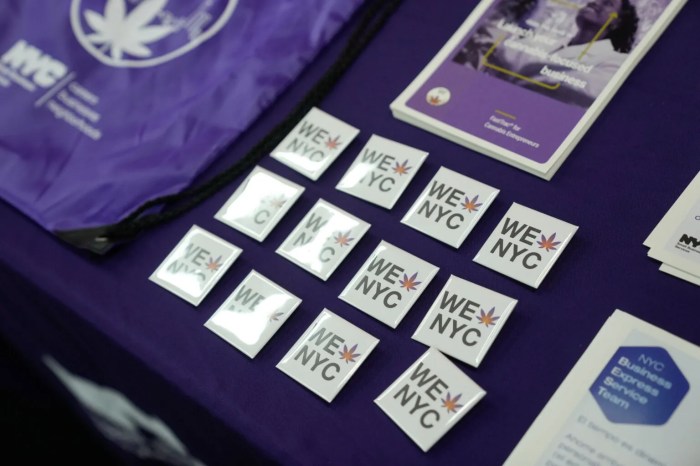
M.T.A. staff surveyed the damage to the Montague Tubes on April 15, 2013.
BY KAITLYN MEADE | The R Train’s connection between Lower Manhattan and Brooklyn will close for over a year to repair damage sustained during Superstorm Sandy, the Metropolitan Transportation Authority announced this month. The Montague Tube, a pair of mile-long tunnels that connect Brooklyn Heights with the Financial District, will shut down for 14 months starting in the first week in August.
Despite the reopening of R train service after Sandy, the massive influx of water into the tunnel caused a lot more damage than could be immediately dealt with. A patch job allowed the R to run through the tunnel about two months after Sandy flooded it, but the repairs did not last long, and the M.T.A. is now facing a massive overhaul of the tunnel’s equipment.
The tunnel was flooded for a length of 4,025 feet to a depth of 20 feet with corrosive salt water, damaging tracks, switches, signals, controls and communications cables in the tunnel, and resulting in increased equipment failure over the past few months, the M.T.A. reported. The damage was so severe that performing repairs on nights and weekends only would take until 2016 to complete.
“The temporary repairs that returned it to operation after Sandy are not enough to provide reliable service,” Fernando Ferrer, the M.T.A.’s acting chairperson, said in a statement. “This is unfortunately the reality of recovery from Sandy: the damage is insidious and continuing, and repairing it will take billions of dollars over several years. We recognize that these closures will be an inconvenience for many of our customers, and we will do our best to provide them with alternatives. But there is no alternative to doing this work now.”
A press release noted that the construction will not have a “material impact” on the authorities finances. The cost is covered by funds already dedicated to tunnel reconstruction projects in the M.T.A.’s Capital Plan Amendment, which set aside money for Sandy repairs.
The M.T.A. estimates that about 65,000 daily riders will be affected by the service changes, but promises that they can be accommodated by other trains that connect Brooklyn and Manhattan. Straphangers can transfer between the R train and adjacent subway lines that will cross the East River, such as the 2, 3, 4, 5, A, B, C, D, F, N and Q lines, which are accessible from the R train’s final four stations in Brooklyn.
On weekdays, the R will run in two sections, from Forest Hills-71st St. in Queens to Whitehall St. in Manhattan, and then from Court St. to Bay Ridge-95th St. in Brooklyn.
On weekends, the R will be re-routed over the Manhattan Bridge, and so will skip City Hall, Cortlandt, Rector, and Whitehall St. stations in Lower Manhattan and Court St. and Jay-Street-MetroTech in Brooklyn. Overnights, the N train, which is normally re-routed through the tunnel to replace the R, will stay on the Manhattan Bridge at all times.
For more information on service changes, visit mta.info.


















